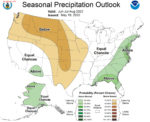Advertise Follow Us
Items Tagged with 'weather'
ARTICLES
Weathering Unpredictability and Stabilizing Yield with Strip-Till
A USDA plant physiologist explains how results of recent tillage comparisons reveal strip-till may be the best practice to address future environmental conditions.
Read More
Manganese Aids Germination, Accelerates Plant Maturity
Timely soil testing and identification of manganese deficiencies, and proper application timing, can ward off yield hits or even increase yields.
Read More










